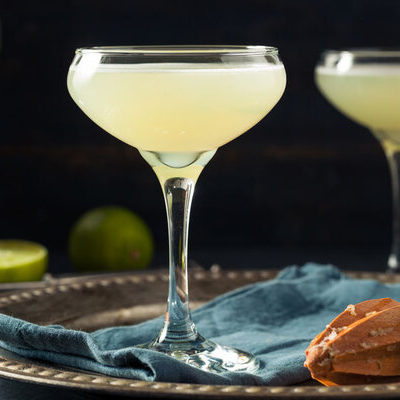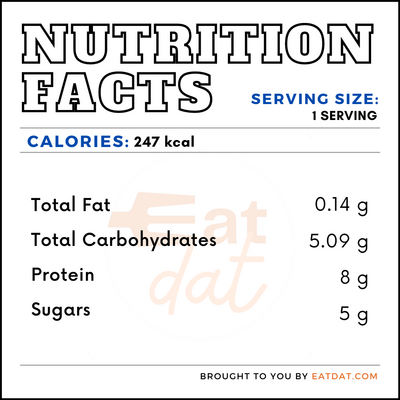
Gin Sour
What is Gin Sour?
A gin sour is a cocktail that belongs to the sour family of cocktails. Sours are cocktails that have a base liquor (in this case, gin), lemon juice, and sugar. Egg whites may also be added to this drink, which results in a thicker and more frothy concoction. Gin sours may be garnished with a lemon wedge or Maraschino cherry on a stick and are usually served in an old-fashioned glass.
The top 10 most popular gin brands that may be used in preparing this cocktail include:
- Hendrick’s
- Highclere Castle
- The Botanist
- Tanqueray
- Monkey 47
- Nolet’s
- Sipsmith
- Greenhook Ginsmiths
- Four Pillars
- Aviation
Origin of gin sour
This cocktail was one of the first to be discovered, though its exact origins are not recorded. It is similar to older cocktails such as Tom Collins (1874), Gimlet (1867), and Pink Lady (1912). One theory is that the British Navy helped to invent the sour by mixing lime juice with their ration of rum to prevent scurvy, which was endemic in sailors. The first written mention of the drink is a hand-written list of cocktails at Mark Ackermann’s Saloon in Toronto, Canada in 1856. The recipe also appeared for the first time in Jerry Thomas’ The Bartender Guide in 1862.
Nutrition
A single cocktail may contain:

Gin has no nutritional value and, without any vitamins or minerals, only offers empty calories. However, the inclusion of egg whites and lemon juice to the cocktail provides some benefits. The egg whites provide protein as well as vitamin A, iron, vitamin B12, riboflavin, choline, zinc, and calcium in decent quantities.
Lemons and lemon juice, by extension, have very little calories but are chock full of nutrition. A single lemon can provide 30 mg of vitamin C. Lemon juice contains plenty of different flavonoids and phenolic compounds, which are powerful antioxidants. Also, lemon juice contains decent levels of calcium, iron, phosphorus, potassium, selenium, folate, choline, vitamin A, lutein, and zeaxanthin, all of which are essential for good health. Traditionally, lemon juice has been used as a treatment for high blood pressure, common cold, sore throat, and irregular menstruation. Regular consumption of lemon juice can also help in lowering the risk of stroke, cancer, and asthma, while increasing iron absorption, immune system functioning, and weight loss.
Overconsumption of alcoholic beverages, such as gin sours, can also result in major health complications. These include obesity, change in the brain’s functioning patterns, liver cirrhosis, pancreatitis, heart problems, strokes, different types of cancers, as well as impact on general overall immunity.
Commercial production
For preparing a classic gin sour, the ingredients required are gin, fresh lemon juice, simple syrup, and egg whites. Other ingredients required for garnishing are a lemon slice and a Maraschino cherry. The ingredients are combined in a cocktail shaker and shaken well. The addition of the egg white at this stage creates a frothy drink and allows it to mix well. Then, ice cubes are added to the mix and again shaken. Finally, the drink is strained into a cocktail glass and garnished with the lemon slice and cherry.
Gin sour recipes
This cocktail may be prepared in a classic manner with just the basic ingredients or they may also be flavored with herbs, flowers, and fruits. Here are a few popular recipes to try:
- Classic Gin Sour
- Lavender Gin Sour
- Strawberry Basil Gin Sour
- Hibiscus Gin Sour with Campari Foam
- Aquafaba Grapefruit Gin Sour
- Holiday Gin Sour with Cherry and Rosemary Simple Syrup
- Red Wine Sour
- Clementine Gin Sour
- Spiced Vanilla Bean Gin Sour
- Blood Orange Gin Sour
- Creamy Gin Sour
FDA regulations
The TTB classifies gin as a product obtained by original distillation from mash, or by re-distillation of the distilled spirits, with juniper berries and other aromatics. Gin must be bottled at 80⁰ proof. Different types of gin are covered under this description.
The FDA defines lemon juice as the unfermented juice obtained from ripe lemons from which seeds and excess pulp are removed. The acidity of concentrated lemon juice must not exceed 15 percent of the acidity of the finished food. Sugar or sucrose is defined as the product obtained by crystallization from sugar cane or sugar beet juice that has been extracted by pressing or diffusion, then clarified and evaporated.
References
Simon Difford, History of Sour Cocktails, Difford’s Guide for Discerning Drinkers, https://www.diffordsguide.com/g/1133/sour-cocktails/history
National Institute of Alcohol Abuse and Alcoholism, Alcohol’s Effects on the Body, https://www.niaaa.nih.gov/alcohols-effects-health/alcohols-effects-body
Hughes, N. (1992), “Gin”, Nutrition & Food Science, Vol. 92 No. 4, pp. 14-16. https://doi.org/10.1108/EUM0000000000962
